Japan’s Tanabata Festival
Tanabata, the Star Festival, is held in Japan every year on July 7 or August 7, depending on local customs. It celebrates the yearly meeting of Orihime, the Weaving Princess, embodied in the star, Vega, and her beloved Hikoboshi, the Cowherd, in the star, Altair.
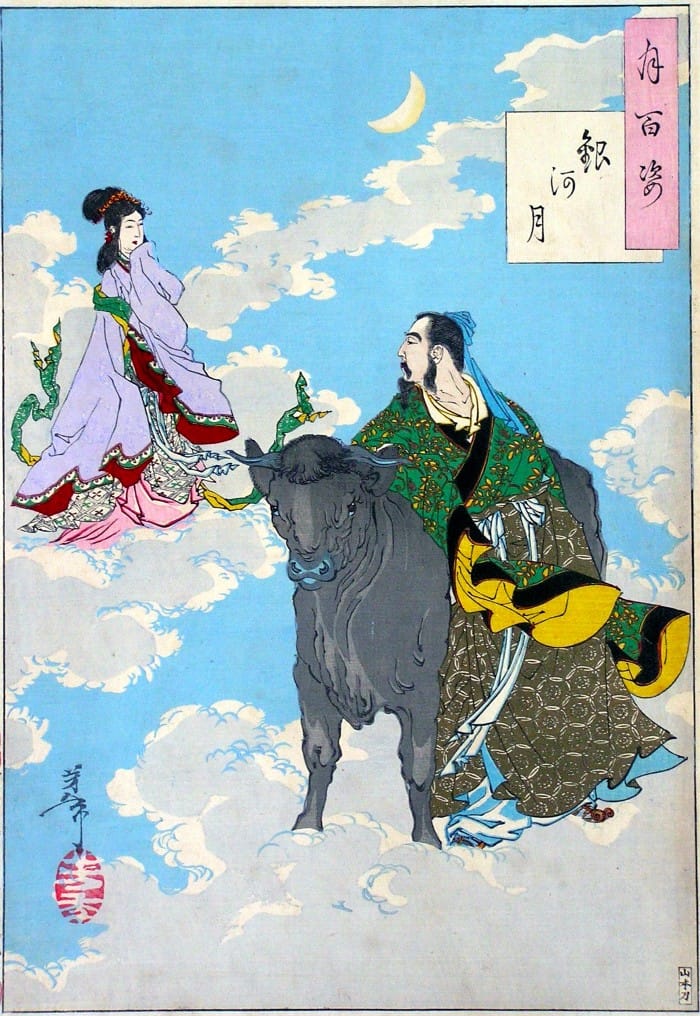
The Story of Star-Crossed Lovers
Beautiful Orihime was a gifted weaver who spent her days weaving kimonos for the gods beside the Amanogawa, Heaven’s River, the Milky Way. She was so diligently absorbed in her work that there was no time in her life for love.
Yet Orihime yearned for romance. This yearning filled her with despair.
Her father, Tentei, Heaven’s King, pitied his beloved daughter. He arranged for her to marry the hard-working cowherd, Hikoboshi. It was a perfect match.
Orihime and Hikoboshi fell hopelessly in love and spent their days in blissful play — to the complete neglect of their duties.
Before long, gods were complaining to Tentei about the sorry state of their kimonos and the havoc that Hikoboshi’s cows were wreaking as they strayed across the heavens.
Furious at the lovers’ negligence, Tentei banished Orihime and Hikoboshi to opposite sides of Heaven’s River.
They returned to their duties, but Orihime’s heartbreak reduced her to tears every day.
Tentei couldn’t bear to see his daughter cry. He declared that if she and Hikoboshi continued to work hard, they would be allowed to meet once a year on the night of the 7th day of the 7th month.
On that night, a celestial magpie would spread its enormous wings to create a bridge across the Milky Way for Orihime to cross — if the skies were clear.
If it were to rain, the River of Heaven would become too full making it impossible for Orihime cross over to meet Hikoboshi.
People pray for clear skies on that night, so they can gaze up at the Milky Way and imagine the yearning lovers meeting. Rain that falls on the night of 7/7 has a special name, Sairuiu, “the tears of Orihime and Hikoboshi.”
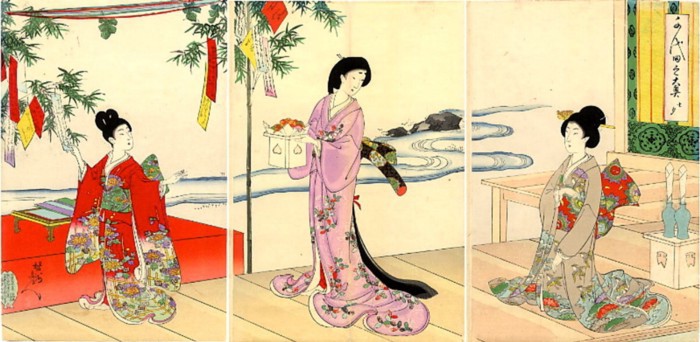
Other Weaving-girls
The story of Orihime and Hikoboshi was brought over from China during the Nara Era (710–794). Yet Tanabata’s origin can also be traced to an ancient Japanese story that tells of a celestial weaver, Tanabata-tsume, who fashioned clothing for the gods. She would meet her lover, a kami (Shinto divinity) once a year at a hut beside Heaven’s River.
There was another festival long ago called Kikōden (乞巧奠), where women prayed to improve their weaving skills.
These stories were mixed together and passed down, forming the basis for the Tanabata festival celebrated today.
According to Japan’s old lunar calendar, Tanabata was celebrated on what is now August 7. This is close to the Obon Festival of August 13, when the spirits of ancestors are welcomed back to their homes and their family gathers to spend time with them. During these days people prayed to their ancestral spirits for good harvests. In ancient days, these two festivals were often combined.
Tanabata Festival
During the early years of Tanabata, women would pray for improvement in their weaving and sewing skills. And both women and men would pray for improvement in their calligraphy.
The Heian, or Kyoto, elite wrote their prayers on mulberry paper with special ink made by grinding an inkstone with drops of dew from taro leaves, believing this magical combination would create more effective prayers.
Tanabata moved from the aristocratic halls of the wealthy during the Heian Era (794–1185), to the streets of Edo (Tokyo) during the Edo Era (1603–1867) where it became a popular, lively festival.
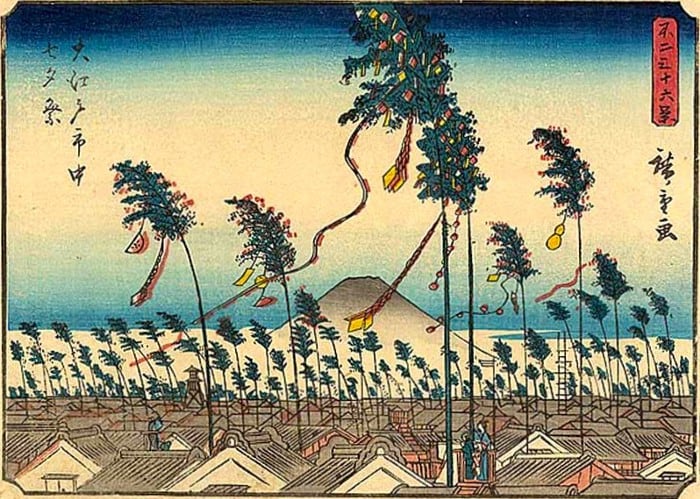
Today, people of all ages continue the tradition of writing poems and wishes on thin strips of paper, called tanzaku, and hanging them from bamboo stalks — bamboo being a vehicle for divine spirits.
Colorful bamboo decorations adorn people’s houses, city streets, schools, and businesses from about a week before Tanabata until the end of the festival. Then, the bamboo and all its decorations are cast into a river or burnt, sending the prayers to the gods
Sendai Tanabata Festival—the biggest in the world
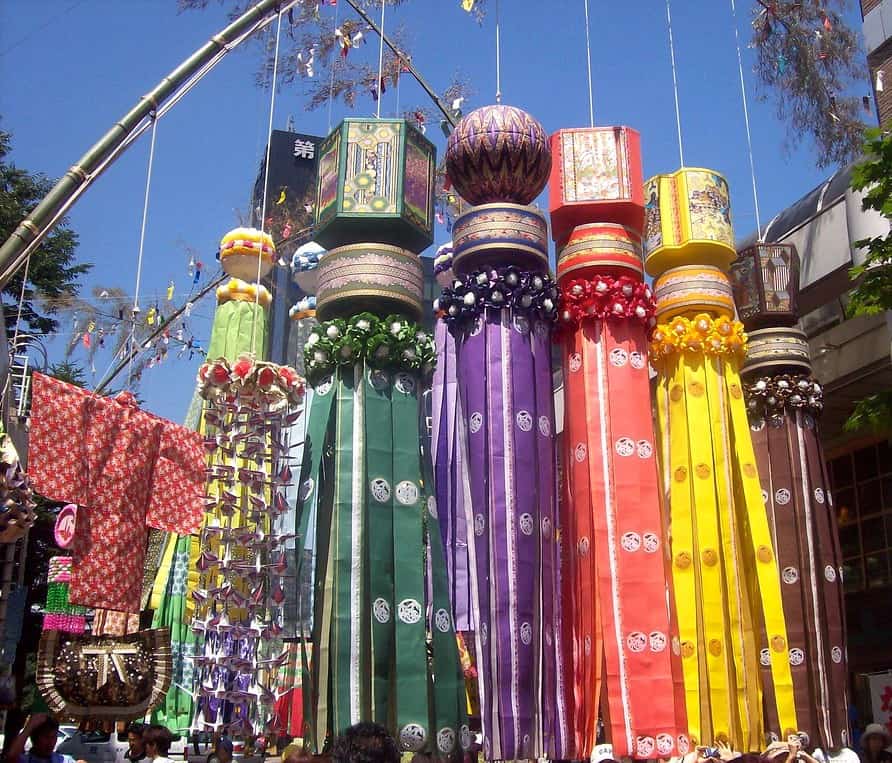
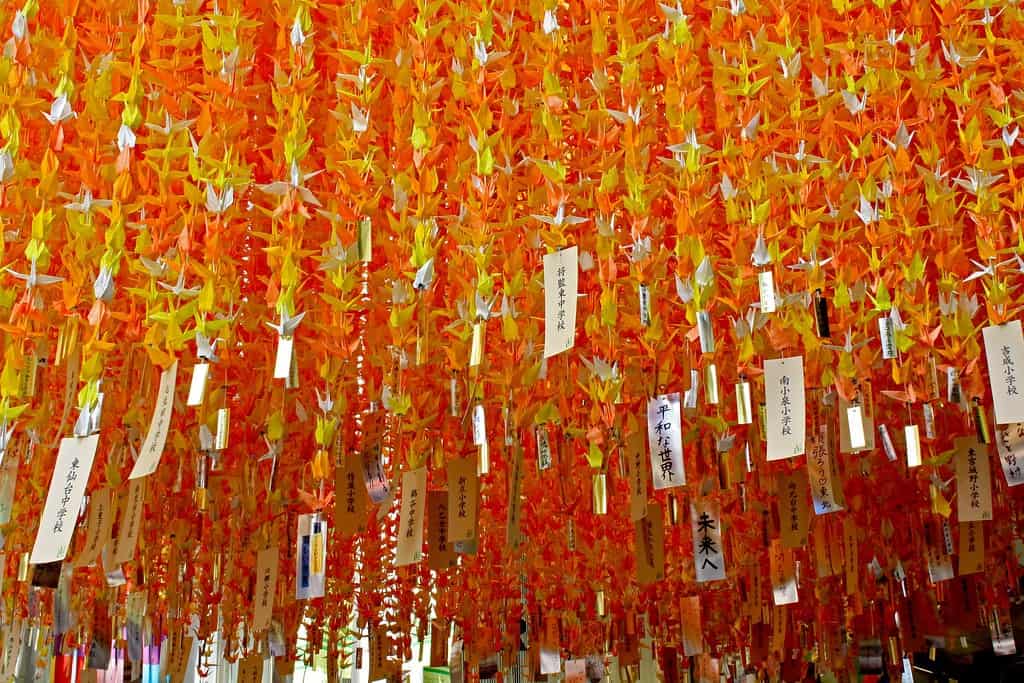
At the most fabulous Tanabata Festival, held in Miyagi Prefecture’s capital of Sendai from August 6–8, the main streets are decorated with bamboo — 10 meters tall or more — hung with wishes and elaborate paper decorations.
Each decoration has a traditional meaning:
- Tanzaku — long rectangles of paper upon which are written prayers for progress in calligraphy and academics
- Kamigoromo — kimonos for protection from calamities, for good health, and for improved sewing skills
- Orizuru — folded cranes, for safety and longevity
- Kinchaku — money purses, for prosperity
- Toami — fishnets, for bountiful catches and harvests
- Kuzukago — trash cans, for cleanliness and frugality
- Fukinagashi — windsocks, representing Orihime’s thread
There is a grand contest on the afternoon of August 6 to determine the most beautiful decorations in each area of downtown Sendai City. Every year, the competition is fierce, resulting in the creation of more and more extravagant decorations. Just one of these bamboo decorations can cost from hundreds of thousands to several million yen (~$30,000 USD)!
If the tears of Orihime and Hikoboshi threaten to fall, merchants rush to cover their valuable handiwork with plastic bags.
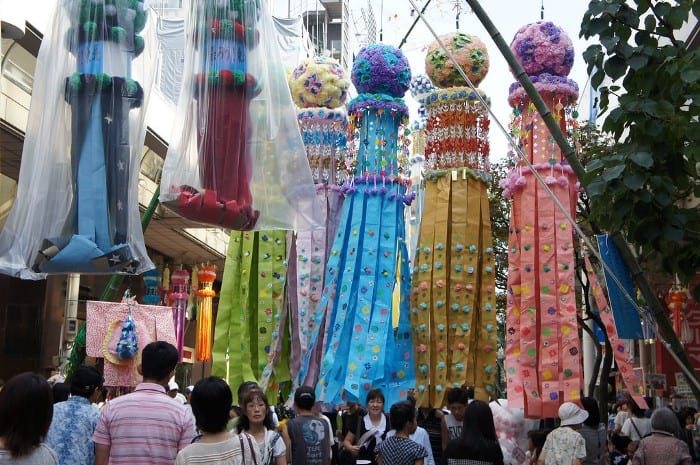
The Five Festivals
Tanabata is one of the five festivals, go-sekku, that celebrate the change of seasons. These are days set aside to prepare for the coming months through purification, prayers, and banishment of misfortune.
The five festivals were imported along with the Chinese lunar calendar from Tang Dynasty China in the 8th century. During the Meiji Era, the festivals were moved to coincide with Western dates that mirrored their former auspicious odd-numbered lunar months and days.
- 1/7 Jin-jitsu, Human Day, or Nanakusa-no-sekku, Seven Herbs Day. On this day people eat rice gruel made with seven wild herbs. This is the last day of New Year’s celebrations.
- 3/3 Hina Matsuri, Dolls or Girls’ Day.
- 5/5 Tango-no-sekku, formerly Boys’ Day, now Kodomo-no-hi, Children’s Day.
- 7/7 Tanabata, Star Festival.
- 9/9 Kiku-no-sekku, Chrysanthemum Festival.
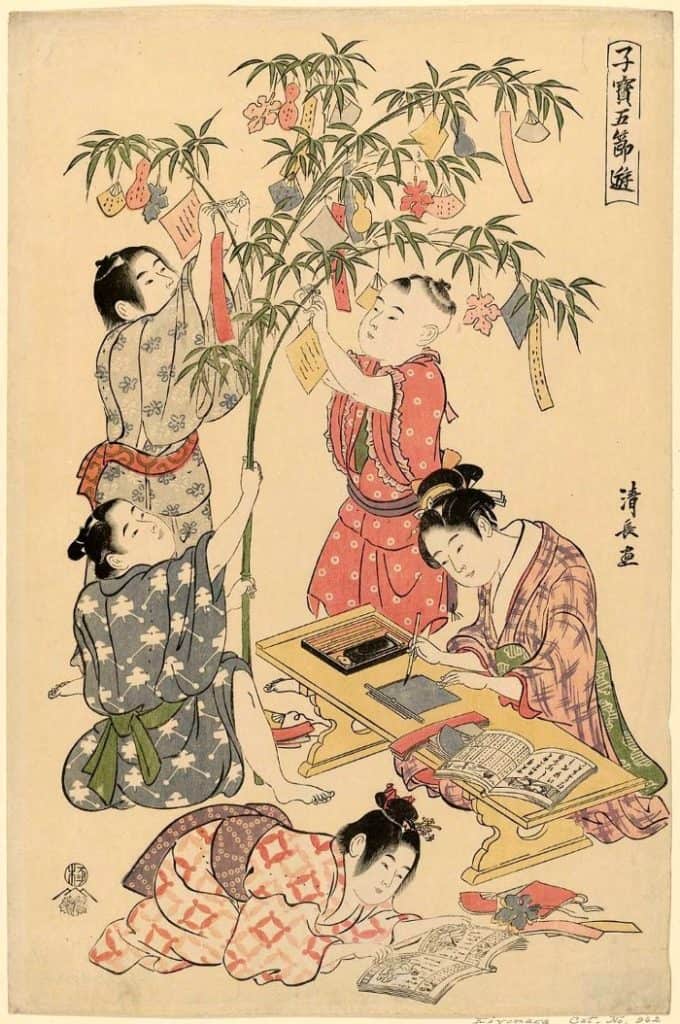
Tanabata Food
A Japanese festival would not be complete without special food. Since Tanabata falls during the hot days of summer, people feast on street food and cold noodles.
Somen — thin noodles served cold with a slightly salty dipping sauce.
Yakitori — grilled chicken on skewers.
Okonomiyaki — savory pancakes filled with lots of vegetables and a little pork.
Yakisoba — noodles stir-fried with cabbage, bean sprouts, carrots, onions, pork and yakisoba sauce.
Takoyaki — grilled dough balls filled with chopped octopus.
Tanabata is just one of many wonderful Japanese festivals held during the hot summer months when people take to the streets in cool cotton yukata and geta sandals.
In fact, one of the largest holidays in Japan falls during the summer, Obon.
Sources:
Kotobank, Digital Museum, https://www.japanese-wiki-corpus.org/, https://www.sendaitanabata.com/, https://www.tohokukanko.jp/, http://www.jaodb.com/, http://renipi.com/knowledge/452/, Institute of Court Culture.
If you have questions about Japan or suggestions for articles, please add them in the comments. For more photos and information on Japan, follow me on instagram at: https://www.instagram.com/more_than_tokyo/




